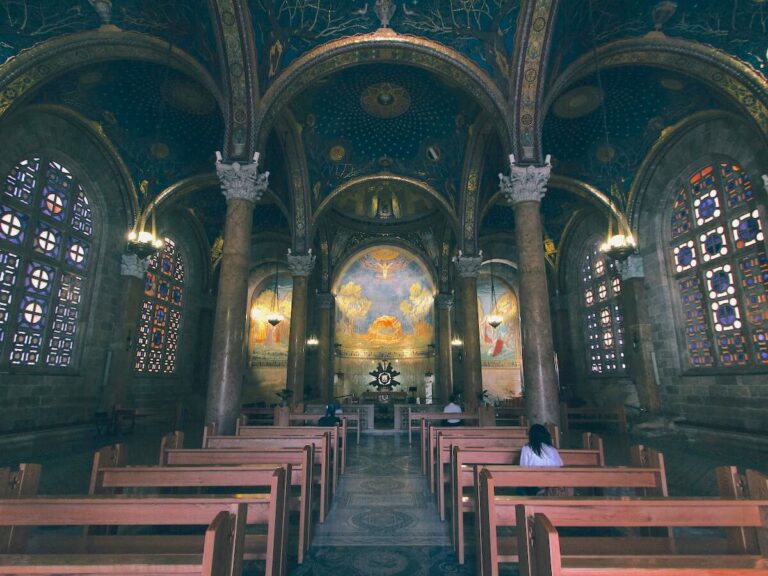Chapel of Saint Helena

The Chapel of Saint Helena is associated with Saint Helena, who is traditionally revered as the mother of Emperor Constantine the Great. Helena played a significant role in the Christianization of the Roman Empire and is credited with discovering the True Cross, the cross on which Jesus Christ was crucified, during a pilgrimage to the Holy Land.
The Chapel of Saint Helena in The Church of the Holy Sepulchre
While there are several chapels and churches dedicated to Saint Helena around the world, the most notable is the Church of the Holy Sepulchre Chapel of Saint Helena in Jerusalem. As you may know, the Church of the Holy Sepulchre is one of the most important Christian pilgrimage sites as it is believed to house the tomb of Jesus Christ.
The Chapel of Saint Helena within the Church of the Holy Sepulchre is located on the east side of the church and is often referred to as the Chapel of St. Helena and the Finding of the True Cross. It commemorates Saint Helena’s discovery of the True Cross and is adorned with artistic and architectural elements that reflect the historical and religious significance of the event.
The story of the discovery of the True Cross is deeply rooted in Christian tradition. According to the accounts, Helena traveled to the Holy Land in the early 4th century and, through divine guidance, identified the location of the True Cross. The cross was then excavated, and a portion of it was sent to Constantinople (modern-day Istanbul), while the remainder was enshrined in Jerusalem.
The Chapel of Saint Helena is often visited by pilgrims and tourists who come to the Church of the Holy Sepulchre to explore the various chapels and religious relics. It shows both the historical and spiritual importance of Saint Helena in Christian tradition and the enduring significance of the True Cross.
Other Associations to Saint Helena
In addition to the Chapel of Saint Helena within the Church of the Holy Sepulchre in Jerusalem, there are other places around the world dedicated to Saint Helena. Between the many places, various artworks, and relics associated with her, Saint Helena’s legacy is well preserved.
- St. Helena’s Chapel in Hagia Sophia, Istanbul: The Hagia Sophia in Istanbul, Turkey, was once a Christian basilica before being converted into a mosque and later a museum. Here you’ll find a small chapel within Hagia Sophia dedicated to Saint Helena.
- Artistic Depictions: Saint Helena is often depicted in Christian art, especially in scenes related to the discovery of the True Cross. Artists throughout history have created paintings, sculptures, and other artworks portraying Saint Helena holding or venerating the True Cross.
- Saint Helena Feast Day: The Catholic Church celebrates the feast day of Saint Helena on August 18th, while the Eastern Orthodox Church commemorates her on May 21st. On these days, believers may attend special services or events dedicated to honoring Saint Helena.
- Relics and Churches Worldwide: Relics associated with Saint Helena, such as pieces of the True Cross, are believed to have been distributed to churches and institutions worldwide. Some churches, particularly those with historical ties to the Byzantine Empire, often possess relics associated with Saint Helena.
- Legacy of Saint Helena: Saint Helena’s legacy extends beyond the physical structures and relics dedicated to her. She is revered as a saint and is remembered for her role in promoting Christianity. This is especially true through her influence on her son, Emperor Constantine, who played a pivotal role in the Christianization of the Roman Empire.





